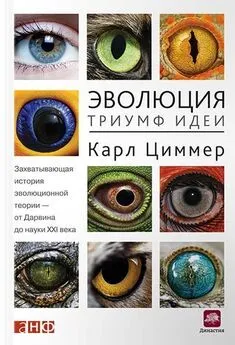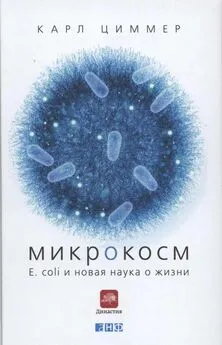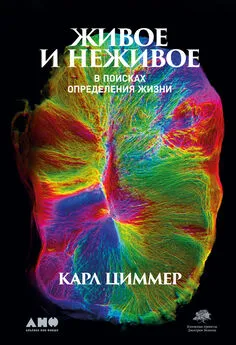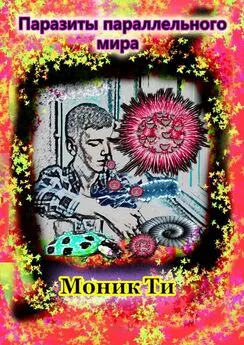Карл Циммер - Паразиты: Тайный мир
- Название:Паразиты: Тайный мир
- Автор:
- Жанр:
- Издательство:Альпина нон-фикшн
- Год:2011
- ISBN:978-5-91671-081-6
- Рейтинг:
- Избранное:Добавить в избранное
-
Отзывы:
-
Ваша оценка:
Карл Циммер - Паразиты: Тайный мир краткое содержание
ПРЕДСТАВЬТЕ СЕБЕ МИР, где паразиты контролируют сознание своих хозяев, отправляя их на смерть.
ПРЕДСТАВЬТЕ СЕБЕ МИР, где паразиты мастерски применяют химическое оружие и маскируются, прикрываясь молекулами собственного хозяина.
ПРЕДСТАВЬТЕ СЕБЕ МИР, где паразиты задают направление эволюции и большинство видов ведет паразитический образ жизни.
ПРЕДСТАВИЛИ? Добро пожаловать на Землю!
Много сотен лет паразиты жили в ночных кошмарах, ужастиках и темных закоулках науки. Тем не менее эти существа относятся к самым успешным и изощренным организмам на свете. Искусно лавируя среди научных данных с их отвратительными подробностями, Карл Циммер сопровождает нас в фантастическом путешествии. Перенося читателя из влажных джунглей Коста-Рики в Южный Судан — рай для паразитов, Циммер показывает, как паразиты могут изменить ДНК, «перекоммутировать» мозг, сделать мужчин более недоверчивыми, а женщин более общительными и превратить хозяина в живой труп. Эта основательная и прекрасно написанная книга выводит паразитов на чистую воду и рассказывает, чему они, владея самыми базовыми техниками выживания в нашем мире, могут научить нас.
Люди просто не догадываются о том, как сложен и причудлив мир паразитов — опаснейших созданий природы, живущих за счет других, и насколько велика их роль в нашей жизни. Они питаются плотью и кровью своих жертв, влияют на биологическое и социальное поведение целых видов, на численность популяции и направляют в конечном счете эволюцию флоры и фауны. В мире, где каждый кормит своего паразита, порой даже трудно провести грань между им и его жертвой. Нужно ли уничтожать всех паразитов или они — необходимый элемент экологической системы? Карл Циммер, один из лучших научных журналистов нашего времени, делает доступными самые сложные научные теории и описывает жизнь паразитов, как фантастический роман с непостижимыми, зловещими, а порой вызывающими сопереживание героями.
«Удовольствие от начала до конца. Циммер — великолепный автор, который в полной мере использует жуткую естественную историю паразитов»
Марк Ридли, The New Scientist
«Книга «Паразиты» показывет, что Циммер принадлежит к лучшим научным журналистам нашего времени»
Кевин Падиан, The New York Times
Паразиты: Тайный мир - читать онлайн бесплатно ознакомительный отрывок
Интервал:
Закладка:
Durden, L. A., and J. E. Keirans. 1996. Host-parasite coextinction and the plight of tick conservation. American Entomologist (Summer):87–91.
Dushay, M. S., and N. E. Beckage. 1993. Dose-dependent separation of Cotesia congregata —associated polydnavirus effects on Manduca sexta larval development and immunity. Journal of Insect Physiology 39(12):1029–1040.
Dybdahl, M. F., and C. M. Lively. 1998. Host-parasite coevolution: Evidence for rare advantage and time-lagged selection in a natural population. Evolution 52(8):1057–1066.
Eberhard, W. G. 1990. Evolution in bacterial plasmids and levels of selection. Quarterly Review of Biology 65:3–22.
Ebert, D. 1994. Virulence and local adaptation of a horizontally transmitted parasite. Science 265:1084–1088.
_____, and E. A. Herre. 1996. The evolution of parasitic diseases. Parasitology Today 12(3):96–101.
Evans, W. S., M. C. Hardy, R. Singh, G. E. Moodie, and J. J. Cote. 1992. Effects of the rat tapeworm Hymenolepis diminuta on the coprophagic activity of its intermediate host, Tribolium confusum. Canadian Journal of Zoology 70:2311–2314.
_____, A. Wong, M. Hardy, R. W. Currie, and D. Vanderwel. 1998. Evidence that the factor used by the tapeworm, Hymenolepis diminuta, to direct the foraging of its intermediate host, Tribolium confusum, is a volatile attractant. Journal of Parasitology 84:1098–1101.
Ewald, P. W. 1994. Evolution of infectious disease. Oxford: Oxford University Press.
_____. 1995. The evolution of virulence: A unifying link between parasitology and ecology. Journal of Parasitology 81(5):659–669.
Farley, J. 1972. The spontaneous generation controversy (1700–1860): The origin of parasitic worms. Journal of the History of Biology 5(1):95–125.
_____. 1977. The spontaneous generation controversy from Descartes to Oparin. Baltimore: Johns Hopkins University Press.
Feener, D. H., and B. V. Brown. 1997. Diptera as parasitoids. Annual Review of Entomology 42:73–97.
Foley, M., and L. Tilley. 1995. Home improvements: Malaria and the red blood cell. Parasitology Today 11(11):436–439.
_____. 1998. Protein trafficking in malaria-infected erythrocytes. International Journal of Parasitology 28:1671–1680.
Foster, W. D. 1965. A history of parasitology. Edinburgh: E. & S. Livingstone.
Fox, J. A., M. F. Dybdahl, J. Jokela, and C. M. Lively. 1996. Genetic structure of coexisting sexual and clonal subpopulations in a freshwater snail (Potamopyrgus antipodarum). Evolution 50:1541–1548.
Friedman, M. J., and W. Trager. 1981. The biochemistry of resistance to malaria. Scientific American (March):156–164.
Fuhrman, J. A. 1999. Marine viruses and their biogeochemical and ecological effects. Nature 399:541–548.
Gardner, S. L., and M. L. Campbell. 1992. Parasites as probes for biodiversity. Journal of Parasitology 78(4):596–600.
Gemmill, A. W., M. E. Viney, and A. F. Read. 1997. Host immune status determines sexuality in a parasitic nematode. Evolution 51(2):393–401.
Gilbert, J., E. Mouchel-Vielh, and J. S. Deutsch. 1997. Engrailed duplication events during the evolution of barnacles. Journal of Molecular Evolution 44:585–594.
Ginsburg, H., S. A. Wray. and P. G. Bray. 1999. An integrated model of chloroquine action. Parasitology Today 15:357–360.
Glenner, H., and J. T. Høeg. 1995. A new motile, multicellular stage involved in host invasion by parasitic barnacles (Rhizocephala). Nature 377:147–150.
_____, A. Klysner, and B. Brodin Larsen. 1989. Cypris ultrastructure, metamorphosis and sex in seven families of parasitic barnacles (Crustacea: Cirripedia: Rhizocephala). Acta Zoologica 23:229–242.
_____, J. T. Høeg, J. J. O'Brien, T. D. Sherman, 2000. Invasive vermigon stage in the parasitic barnacles Loxothylacus texanus and L. panopaei (Sacculinidae): closing of the rhizocephalan life-cycle. Marine Biology, in press.
Good, M. F., D. C. Kaslow, and L. H. Miller. 1998. Pathways and strategies for developing a malaria blood-stage vaccine. Annual Review of Immunology 16:57–87.
Grenfell, B. T. 1992. Parasitism and the dynamics of ungulate grazing systems. The American Naturalist 139:907–929.
Gross, P. 1993. Insect behavioral and morphological defenses against parasitoids. Annual Review of Entomology 38:251–73.
Grove, D. I. 1990. A history of human helminthology. London: CAB International.
Hamilton, W. D., and M. Zuk. 1982. Heritable true fitness and bright birds: A role for parasites? Science 218:384–387.
Harris, A. R. C., R. J. Russell, and A. D. Charters. 1984. A review of schistosomiasis in immigrants in Western Australia, demonstrating the unusual longevity of Schistosoma mansoni. Proceedings of the Royal Society of Tropical Medicine and Hygiene 78:385–388.
Hart, B. L. 1994. Behavioral defense against parasites: Interaction with parasite invasiveness. Parasitology 109:S139–S151.
_____. 1997. Behavioral defense. In Host-parasite evolution: General principles and avian models, edited by D. H. Clayton and J. Moore. Oxford: Oxford University Press.
_____, and L. A. Hart. 1994. Fly switching by Asian elephants: Tool use to control parasites. Animal Behavior 48:35–45.
_____, L. A. Hart, M. S. Mooring, and R. Olubayo. 1992. Biological basis of grooming behavior in antelope: The body-size, vigilance and habitat principles. Animal Behavior 44:615–631.
Hartl, D. L., A. R. Lohe, and E. R. Lozovskaya. 1997. Modern thoughts on an ancient mariner: function, evolution, regulation. Annual Review of Genetics 31:337–358.
Hartnoll, R. G. 1967. The effects of sacculinid parasites on two Jamaican crabs. Journal of the Linnean Society (Zoology) 46:275–295.
Harwood, C. L., I. S. Young, D. L. Lee, and J. D. Altringham. 1996. The effect of Trichinella spiralis infection on the mechanical properties of the mammalian diaphragm. Parasitology 113:535–543.
Haseeb, M. A., N. R. Bergquist, L. K. Eveland, and R. C. Eppard. 1998. Vaccination against schistosomiasis: Progress, prospects, and novel approaches. Paper read at Ninth International Congress of Parasitology, 1998, at Chiba, Japan.
Hashimoto, T., L. B. Sanchez, T. Shirakura, M. Muller, and M. Hasegawa. 1998. Secondary absence of mitochondria in Giardia lamblia and Trichomonas vaginalis revealed by valyl-tRNA synthetase phylogeny. Proceedings of the National Academy of Sciences 95:6860–6865.
Heinlein, R. A. 1990. The puppetmasters. New York: Ballantine Books.
Helluy, S., and J. C. Holmes. 1989. Serotonin, octopamine, and the clinging behavior induced by the parasite Polymorphus paradoxus (Acanthocephala) in Gammarus lacustris (Crustacea). Canadian Journal of Zoology 68:1214–1220.
Herre, E. A. 1993. Population structure and the evolution of virulence in nematode parasites of fig wasps. Science 259:1442–1445.
Herren, H. R., and P. Neuenschwander. 1991. Biological control of cassava pests in Africa. Annual Review of Entomology 36:257–283.
Hershokovitz, I., and G. Edelson. 1991. The first identified case of thalassemia? Human Evolution 6(1):49–54.
Hill, A. V. S., S. N. R. Yates, C. E. M. Allsopp, S. Gupta, S. C. Gilbert, A. Lalvani, M. Aidoo, M. Davenport, and M. Plebanski. 1994. Human leukocyte antigens and natural selection by malaria. Proceedings of the Royal Society of London B 346:378–385.
Hitler, A. 1971. Mein Kampf. Translated by Ralph Manheim. Boston: Houghton Mifflin Company.
Hoberg, E. P., S. L. Gardner, and R. A. Campbell. 1999a. Systematics of the Eucestoda: Advances toward a new phylogenetic paradigm, and observations on the early diversification of tapeworms and vertebrates. Systematic Parasitology 42:1–12.
_____, A. Jones, and R. A. Bray. 1999b. Phylogenetic analysis among the families of the Cyclophyllidea (Eucestoda) based on comparative morphology, with new hypotheses for co-evolution in vertebrates. Systematic Parasitology 42:51–73
_____, R. L. Rausch., K. Eom, and S. L. Gardner. 2000. A phylogenetic hypothesis for species of the genus Taenia (Cyclophyllidea: Taeniidae). Journal of Parasitology, in press.
Høeg, J. T. 1985a. Cypris settlement, kentrogon formation and host invasion in the parasitic barnacle Lernaeodiscus porcellanae (Muller) (Crustacea: Cirripedia: Rhizocephala). Acta Zoologica 66:1–45.
_____. 1985b. Male cypris settlement in Clistrosaccus paguri Lilljeborg (Crustacea: Cirripedia: Rhizocephala). Journal of Experimental Marine Biology and Ecology 89:221–235.
_____. 1987. Male cypris metamorphosis and a new male larval form, the trichogon, in the parasitic barnacle Sacculina carcini (Crustacea: Cirripida: Rhizocephala). Philosophical Transactions of the Royal Society of London B 317:47–63.
_____. 1992. Rhizocephala. In Microscopic anatomy of invertebrates. New York: Wiley-Liss.
_____. 1995. The biology and life cycle of the Rhizocephala (Cirripedia). Journal of the Marine Biological Association of the United Kingdom 75:517–550.
Hölldobler, B., and E. O. Wilson. 1990. The ants. Cambridge: Harvard University Press.
Hotez, P., J. Hawdon, and M. Cappello. 1995. Molecular mechanisms of invasion by Ancyclostoma hookworms. In Molecular approaches to parasitology, edited by J. C. Boothroyd and R. Komuniecki. New York: Wiley-Liss.
_____, and D. J. Prichard. 1995. Hookworm infection. Scientific American 272(June):68–74.
Howarth, F. G. 1991. Environmental impacts of classical biological control. Annual Review of Entomology 36:485–509.
Huffman, M. A. 1997. Current evidence for self-medication in primates: A multidisciplinary perspective. Yearbook of Physical Anthropology 40:171–200.
Hurd, H. 1998. Parasite manipulation of insect reproduction: Who benefits? Parasitology 116(Supplement):S13–21.
Hurst, G. D. D., F. M. Jiggins, and J. H. Graf von der Schulenbeurg. 1999. Male-killing Wolbachia in two species of insect. Proceedings of the Royal Society of London B 266:735–740.
Hurst, L. D. 1993. The incidences, mechanisms and evolution of cytoplasmic sex ratio distorters. Biological Reviews of the Cambridge Philosophical Society 68:121–193.
James, A. A., and P. A. Rossignol. 1991. Mosquito salivary glands: Parasitological and molecular aspects. Parasitology Today 7:267–271.
Janeway, C. A., and P. Travers. 1994. Immunobiology: The immune system in health and disease. London: Current Biology, Ltd.
Jarolim, P., J. Palek, D. Amato, K. Hassan, P. Sapak, G. T. Nurse, H. L. Rubin, S. Zhai, K. E. Sahr, and S. Liu. 1991. Deletion in erythrocyte band 3 gene in malaria-resistant Southeast Asian ovalocytosis. Proceedings of the National Academy of Sciences 88:11022–11026.
Karanja, D. M. S., D. G. Colley, B. L. Nahlen, J. H. Ouma, and W. E. Secor. 1997. Studies of schistosomiasis in western Kenya: I. Evidence for immune-facilitated excretion of schistosome eggs from patients with Schistosoma mansoni and human immunodeficiency virus coinfections. American Journal of Tropical Medicine and Hygiene 56(5):515–521.
Читать дальшеИнтервал:
Закладка:
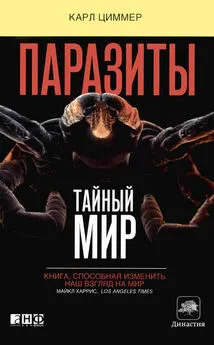
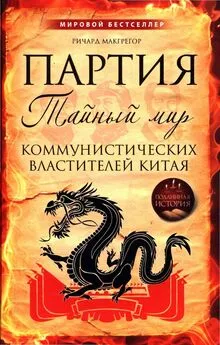
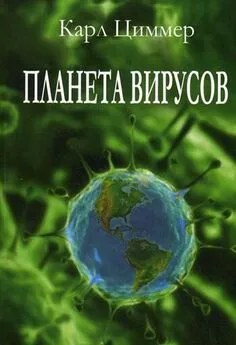
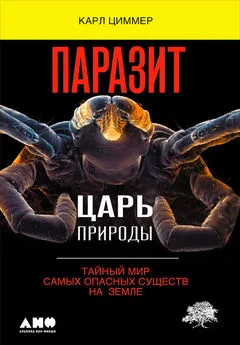
![Карл Циммер - Паразит – царь природы [Тайный мир самых опасных существ на Земле] [litres]](/books/1067054/karl-cimmer-parazit-car-prirody-tajnyj-mir-sam.webp)
![Карл Циммер - Она смеется, как мать [Могущество и причуды наследственности] [litres]](/books/1075049/karl-cimmer-ona-smeetsya-kak-mat-moguchestvo-i-pr.webp)
